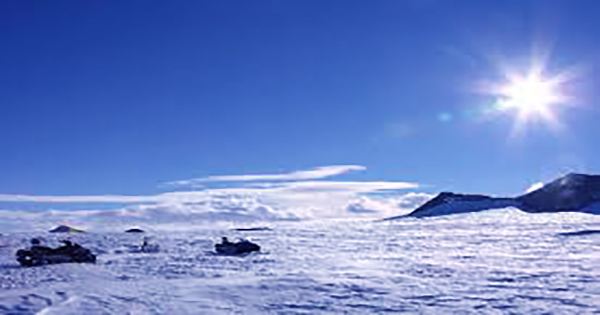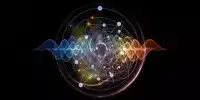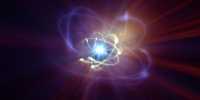In 2004, NASA’s rover operation discovered a strange mineral, jarosite, on Mars. It is a sulfate of iron and potassium and requires water and acidic conditions to form it. There was so much jarosites that it surprised planetary scientists. How could it be a planet on Mars, with little water and alkaline soil? Apparently, the explanation buried in Antarctica. As published in Nature Communications, researchers have discovered deep jarosite under the ice of the southern continent. The presence of this mineral at the bottom of the Antarctic Glacier suggests that an estimate of its formation on Mars is probably correct.
Scientists believe that jarosite deposits formed billions of years ago when the red planet was not red but was white – covered in dense glaciers. These glaciers polluted by rocky dust from the planet, and ice could slowly turn the dust into jaundice.
Antarctic jarosite crystals found inside an ice sheet from a depth of about 1,620 meters (5,315 feet) when ice had accumulated about 300,000 years ago. The ice hole was scattered in the ice dome Talos Dome at the edge of the East Antarctic Plateau, and given its depth, it considered a good analog for Mars. It is isolated from the Earth’s atmosphere so it is distinct from its pressure, temperature, chemistry, and pH. According to the study, a system explains the conversion of mineral powder stuck in deep ice to jarosite. The mineral must trap in ice at least 1,000 meters (3,281 feet) deep, with temperatures hovering around -10 ° C (14. F). under these conditions, the liquid water needed to convert the jarosite appears in the form of concentrated acid solutions whose solidity is much lower than that of water.
The team thinks that the presence of sulfur-rich basaltic dust and aerosols from volcanoes will be a common feature of both Earth and Mars, so the process will work. However, in the Earth’s ice core there were a few grains of jarosite. Mars, on the other hand, is rich in minerals and is present almost everywhere. The team believes that the obvious nature of the Red Planet could explain such a difference.
Lead author Giovanni Baccolo, from the Università di Studi di Milano-Bicocca, said in a statement, “The discovery is intended to revolutionize current ideas about the origins of the vast deposits of jarosite on Mars.” “Although they are now gone, the ancient glaciers and the dust trapped between them seem to have left a clear geological mark on the Red Planet, there is evidence of climate events from the past.” The team will now seek to investigate ice probes for other minerals that may have grown on Mars. The new mix of Mars arrived there in February 2021, which is definitely a great time to explore how other minerals on Mars came to be.













